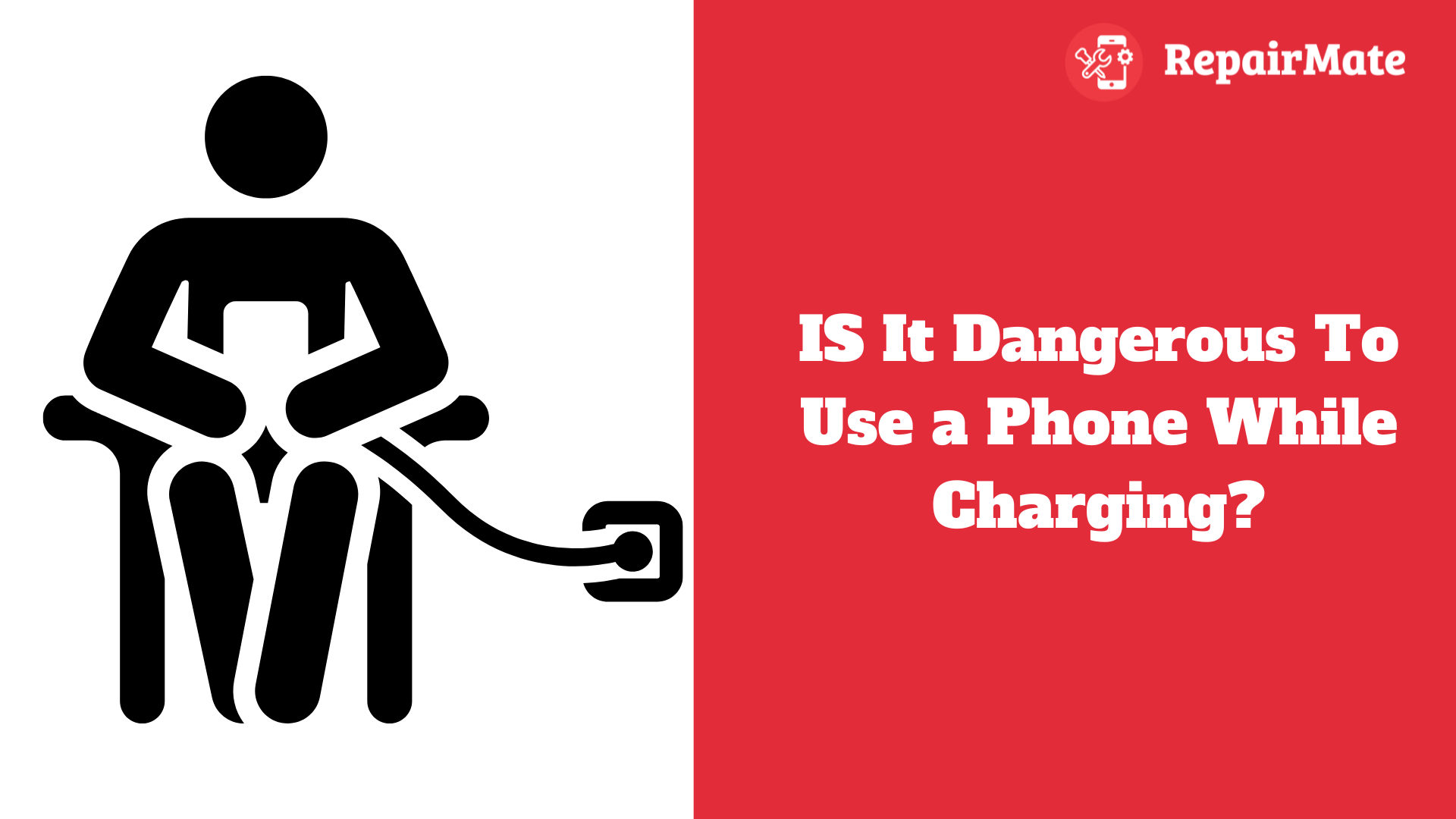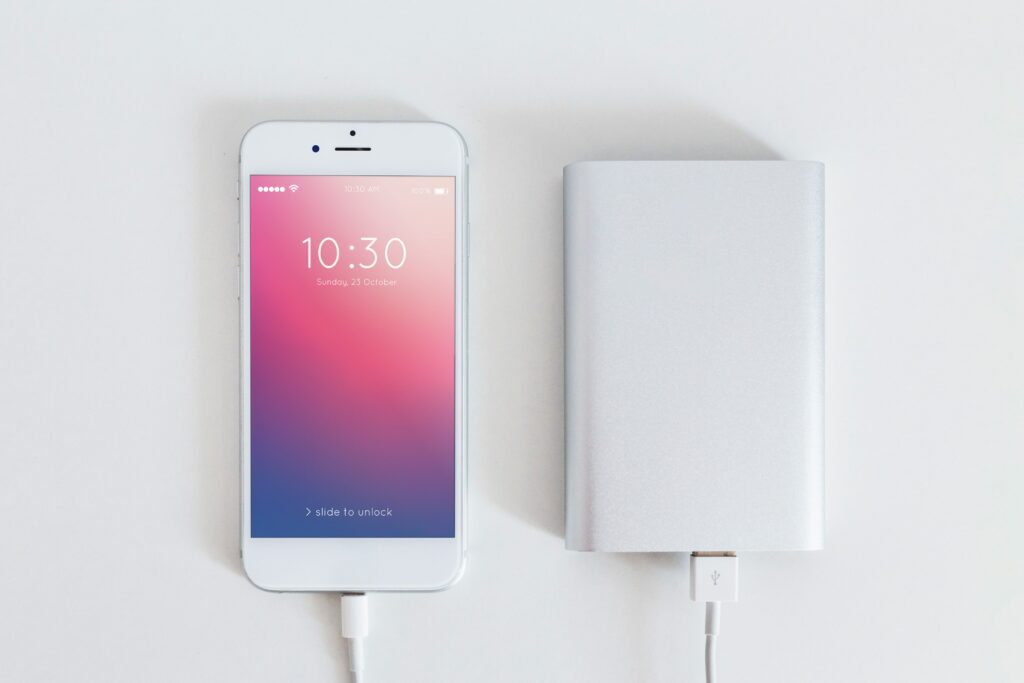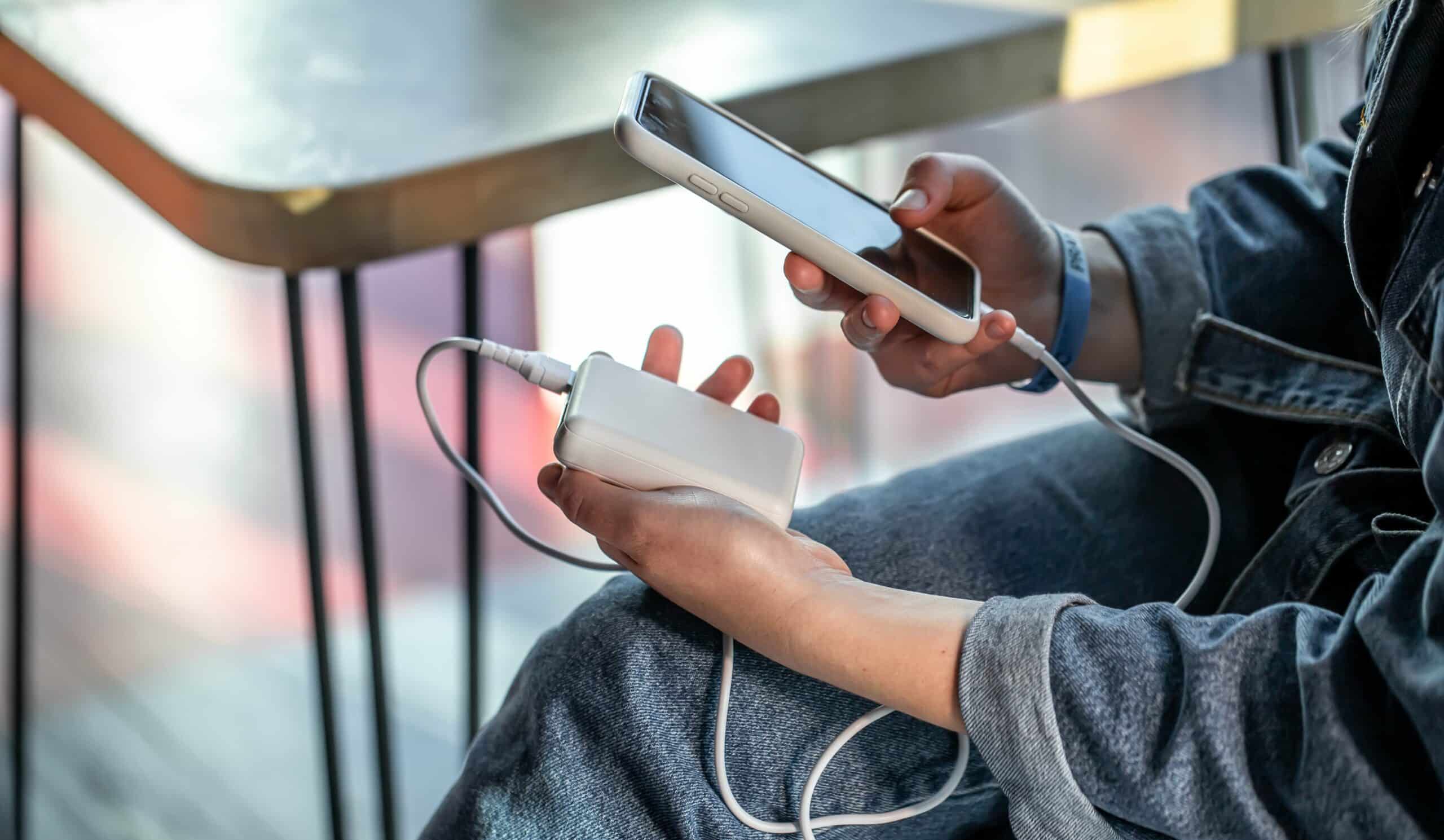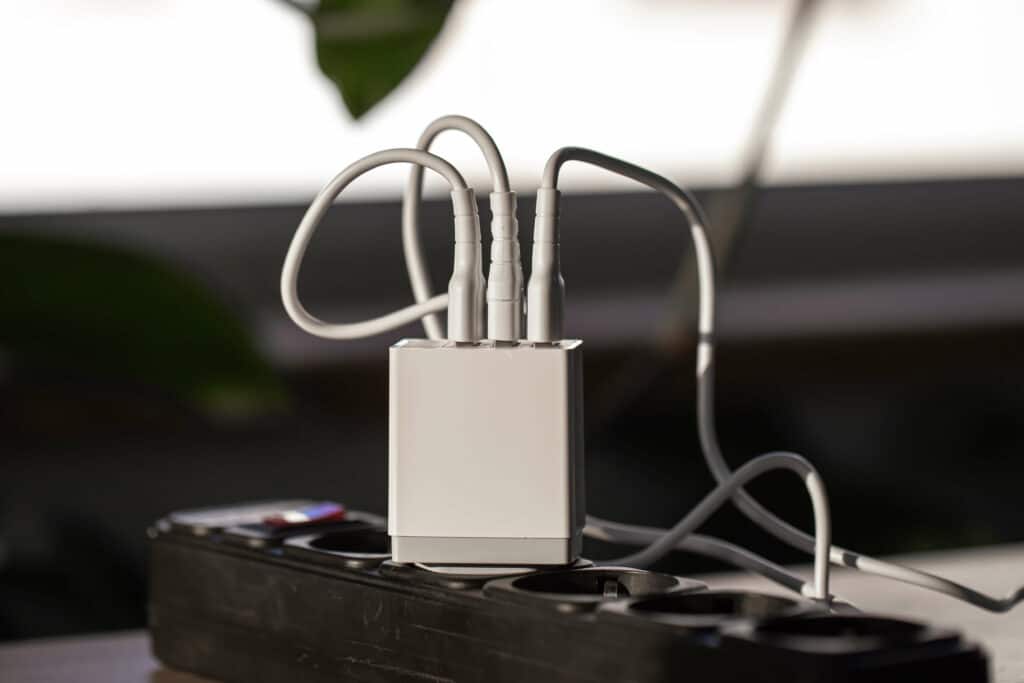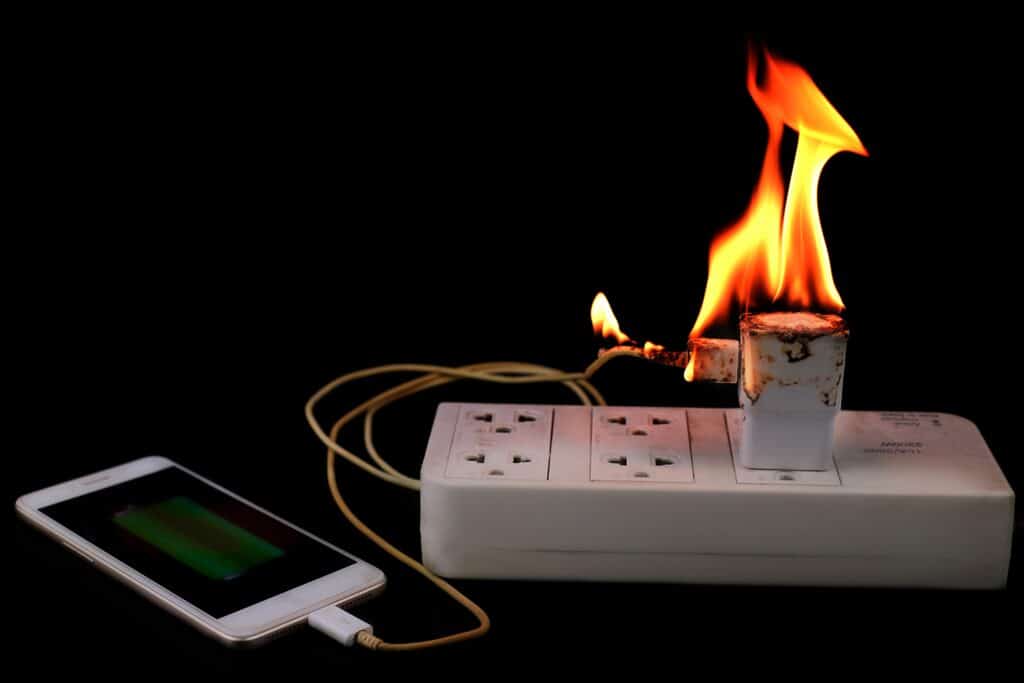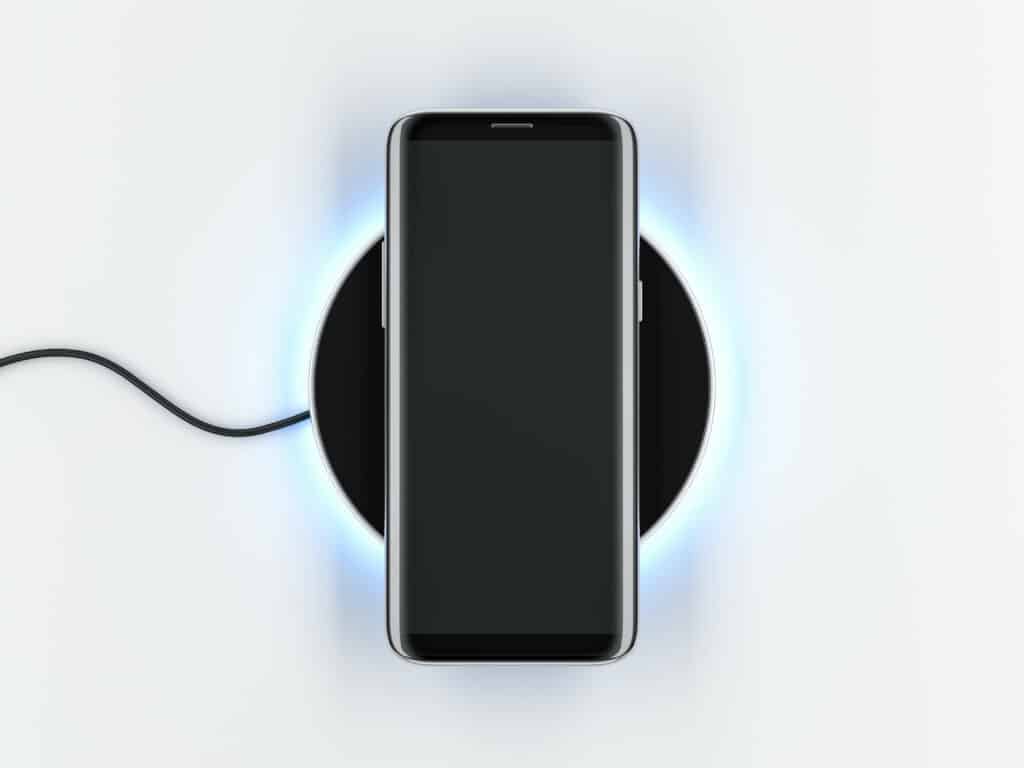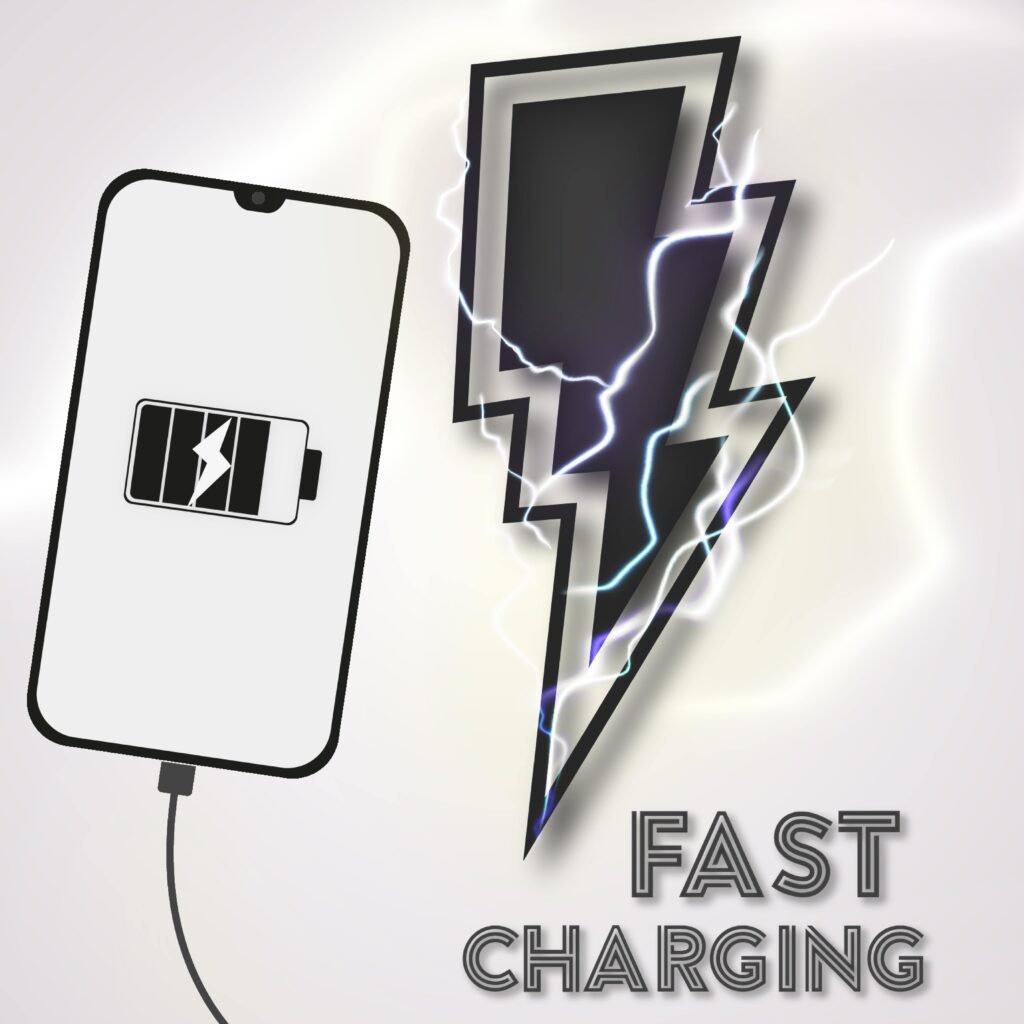In today’s fast-paced world, smartphones have become an integral part of our lives. They keep us connected, informed, and entertained. With the increasing reliance on these devices, it is no surprise that we often find ourselves using our phones while they are charging. The convenience of being able to use our phones while they are plugged in is undeniable. Whether it’s scrolling through social media, watching videos, or playing games, we have all been guilty of this common practice.
The Science Behind Phone Charging and Battery Safety
To understand the risks associated with using a phone while charging, it is important to first grasp how phone charging works and the significance of battery safety. When we plug our phones into a charger, an electrical current flows from the power source to the battery, replenishing its energy. This process involves the conversion of electrical energy into chemical energy, which is stored in the battery for later use.
Battery safety is crucial because lithium-ion batteries, which are commonly used in smartphones, can be volatile if mishandled. These batteries contain flammable electrolytes that can ignite if exposed to extreme temperatures or damaged. Additionally, overcharging or using non-certified chargers can lead to overheating and potentially cause a fire.
Is it dangerous to Use a Phone While Charging?
Using your phone while it’s charging might seem like a convenient way to multitask, but it comes with its fair share of risks that are worth considering. One of the most prominent concerns is the potential for overheating. When you’re actively using your phone while it’s plugged in, especially if it’s engaged in demanding tasks like gaming or video streaming, it can generate a significant amount of heat. This heat, combined with the charging process, can push the device’s temperature to dangerous levels. Not only does this affect the phone’s performance, but it also poses a serious fire hazard. Lithium-ion batteries, commonly used in smartphones, are particularly susceptible to overheating, and pushing them to their limits by simultaneous usage and charging can lead to thermal runaway—a potentially explosive chain reaction within the battery.
Moreover, the practice of using a phone while it’s connected to a power source increases the risk of electrical shock. Our bodies can inadvertently become part of the electrical circuit when we touch our phones during charging. If there are any faults in the charger or if the phone itself has been damaged, this creates a direct pathway for electricity to flow through us, potentially resulting in electric shock. This risk is heightened in environments where moisture is present, such as bathrooms or kitchens, where water can act as a conductor, further increasing the likelihood of electrocution.
Additionally, using a phone while it’s charging can impact the charging process itself. Some devices may charge more slowly or inconsistently when they’re in use, as the power drawn by the active functions competes with the power required for charging. This can prolong the time it takes to reach a full charge and may even cause the battery to degrade more quickly over time, reducing its overall lifespan.
So, while it may be tempting to scroll through social media or respond to messages while your phone is charging, it’s important to weigh the potential risks against the convenience. Overheating, electrical shock, and compromised charging efficiency are all valid concerns that should be taken into consideration. Whenever possible, it’s safest to allow your phone to charge undisturbed and to avoid using it while it’s connected to a power source. Your safety and the longevity of your device’s battery are worth the extra patience.
Risks of Using Unauthorised Chargers With Mobile Phones
Utilising unauthorised chargers with your mobile phone poses significant risks to both the device and personal safety. These chargers may not adhere to necessary safety standards, leading to inconsistent power delivery or even electrical surges. Such fluctuations can result in overheating, battery damage, or worst-case scenario, electrical fires. Using uncertified chargers can also void warranty coverage and may not provide optimal charging performance, leading to slower charging times or reduced battery lifespan. To mitigate these risks, it’s imperative to use chargers that are certified by reputable manufacturers and meet required safety standards. Investing in quality charging accessories may incur a slightly higher cost upfront but can safeguard against potential damage to your phone and ensure safer charging experiences in the long run.
Potential for Overheating and Fire Risk When Using a Phone While Charging
One of the primary concerns associated with using a phone while charging is the potential for overheating, which can escalate to fire hazards. The simultaneous operation of the phone and charging circuitry generates heat, and if not dissipated adequately, this can lead to thermal buildup. Over time, this excess heat can compromise the integrity of internal components, increasing the risk of device malfunctions or even igniting nearby flammable materials. To mitigate these risks, it’s essential to avoid obstructing ventilation ports or covering the device while charging. Additionally, refraining from using intensive applications or games that tax the phone’s processor can help minimise heat generation during charging. Furthermore, charging your phone on a non-flammable surface and keeping it away from combustible materials can provide an extra layer of safety in the event of overheating or thermal runaway. Regularly inspecting charging cables and connectors for signs of damage or wear can also help prevent potential fire hazards associated with charging.
Impact of Using Damaged Charging Cables or Adapters on Safety
Using damaged charging cables or adapters poses significant safety risks to both the user and the device itself. When charging cables or adapters become frayed, worn out, or otherwise compromised, they may expose wires or internal components, increasing the likelihood of electrical hazards. For instance, exposed wires can cause short circuits, electrical shocks, or even fires if they come into contact with moisture or conductive materials.
Furthermore, damaged charging cables or adapters may not provide a secure and stable connection between the power source and the device, leading to fluctuations in power delivery. These fluctuations can result in overcharging, undercharging, or inconsistent charging, which can damage the battery, reduce its lifespan, and negatively impact the device’s performance.
Moreover, using damaged charging accessories can also void warranty coverage and may not be covered by consumer protection policies, leaving users financially liable for any damages or accidents that occur as a result of their use.
To mitigate the risks associated with using damaged charging cables or adapters, it’s essential to regularly inspect charging accessories for signs of wear and tear, such as frayed cables, loose connectors, or exposed wires. If any damage is detected, the accessory should be replaced immediately with a certified and compatible replacement. Additionally, users should avoid bending or twisting charging cables excessively, as this can weaken the internal wiring and contribute to premature damage. By prioritising the use of high-quality, undamaged charging accessories, users can ensure safer charging experiences and prolong the lifespan of their devices.
Exploring the relationship between phone charging and electromagnetic radiation exposure
The relationship between phone charging and electromagnetic radiation exposure is a topic of interest and concern among consumers and researchers alike. While charging, mobile phones emit electromagnetic radiation in the form of electromagnetic fields (EMF). These fields are generated by the phone’s electrical components, including the battery, charging circuitry, and wireless communication modules.
While the levels of EMF emitted during phone charging are generally low, prolonged exposure to electromagnetic fields has been associated with various health concerns, including increased cancer risk, adverse reproductive outcomes, and neurological effects. However, the scientific consensus on the potential health effects of EMF exposure remains inconclusive, with conflicting findings from different studies.
To minimise exposure to electromagnetic radiation during phone charging, users can take several precautionary measures. These include keeping the phone at a safe distance from the body while charging, such as placing it on a nearby table or desk rather than holding it in hand or keeping it in a pocket. Additionally, using wired charging methods instead of wireless charging can reduce exposure to electromagnetic fields, as wireless charging pads emit electromagnetic radiation during operation.
While more research is needed to fully understand the health implications of EMF exposure from phone charging, adopting prudent practices such as those mentioned above can help mitigate potential risks and promote safer charging habits.
Safety concerns related to water damage and charging phones simultaneously
Charging phones simultaneously with exposure to water or damp environments poses significant safety concerns and risks for both the device and the user. Water is a conductor of electricity, and when it comes into contact with the charging port or circuitry of a phone, it can create a pathway for electrical current to flow. This can lead to short circuits, electrical shocks, or device malfunctions, posing a potential safety hazard.
Moreover, water damage can also affect the integrity of the phone’s internal components, including the battery, charging circuitry, and other sensitive electronics. Exposure to moisture can cause corrosion, oxidation, or rusting of metal components, leading to reduced performance, increased risk of malfunctions, or even permanent damage to the device.
To mitigate the risks associated with water damage and charging phones simultaneously, users should avoid using their phones in wet or humid environments, such as bathrooms, kitchens, or swimming pools. Additionally, it’s essential to ensure that both the phone and charging accessories are dry before connecting them for charging. If the phone or charging cable comes into contact with water, it should be immediately disconnected from the power source, dried thoroughly with a soft cloth, and inspected for signs of damage before attempting to use it again.
Furthermore, using waterproof or water-resistant phone cases and charging accessories can provide an additional layer of protection against water damage and minimise the risk of electrical hazards. By adopting these precautionary measures, users can help safeguard their devices and themselves from the potential safety risks associated with charging phones in wet or damp conditions.
Understanding the role of lithium-ion batteries in charging safety
Lithium-ion batteries play a crucial role in powering mobile devices, including smartphones, tablets, and laptops. These rechargeable batteries are preferred for their high energy density and relatively lightweight, making them ideal for portable electronic devices. However, understanding their role in charging safety is paramount for users to prevent potential hazards.
During charging, lithium-ion batteries undergo a chemical process where lithium ions move between the battery’s positive and negative electrodes. This process, known as intercalation, stores energy in the battery for later use. While lithium-ion batteries are generally safe when used correctly, improper charging practices can lead to safety risks such as overheating, fires, or explosions.
Overcharging, exposing the battery to extreme temperatures, using incompatible charging accessories, or physical damage to the battery can compromise its integrity and increase the risk of thermal runaway—a phenomenon where the battery overheats uncontrollably, leading to a potentially catastrophic failure.
To ensure charging safety with lithium-ion batteries, users should adhere to manufacturer guidelines and recommendations. This includes using certified charging accessories, avoiding overcharging, and charging the device in a well-ventilated area. Additionally, users should monitor the battery’s temperature during charging and avoid exposing it to extreme heat or cold, as this can accelerate degradation and increase the risk of safety incidents.
Regularly inspecting the battery and charging accessories for signs of damage or wear, such as swelling, leakage, or frayed cables, is also essential. If any abnormalities are detected, the battery should be replaced immediately with a genuine replacement from the manufacturer.
By understanding the role of lithium-ion batteries in charging safety and following best practices for battery maintenance and charging, users can minimise the risk of safety incidents and prolong the lifespan of their devices.
Effects of Extreme Temperatures on Phone Charging Safety
Extreme temperatures can have significant effects on the safety and performance of phone charging. Both high and low temperatures can impact the battery’s ability to hold a charge, affect charging efficiency, and even pose safety risks.
High temperatures, such as those encountered in hot environments or direct sunlight, can accelerate battery degradation and increase the risk of thermal runaway. When a battery overheats, it can lead to reduced battery life, increased internal resistance, and potential damage to the battery’s internal components. In extreme cases, overheating can cause the battery to swell, leak, or even catch fire or explode.
On the other hand, low temperatures can also affect phone charging safety by reducing the battery’s capacity and hindering charging efficiency. Cold temperatures can cause the battery to become sluggish, resulting in longer charging times and reduced overall performance. Additionally, exposing a phone to extreme cold can increase the risk of condensation forming inside the device, leading to moisture damage or short circuits.
To ensure safe charging in extreme temperatures, users should avoid exposing their phones to prolonged periods of direct sunlight or extreme heat. Additionally, it’s advisable to keep the phone in a well-ventilated area during charging and avoid charging the device in extreme cold conditions. Using insulated phone cases or protective covers can help mitigate temperature extremes and provide an extra layer of protection for the device.
Regularly monitoring the phone’s temperature during charging and avoiding charging-intensive tasks, such as gaming or streaming, can also help prevent overheating and ensure safe charging practices. By being mindful of temperature extremes and taking appropriate precautions, users can minimise the risk of safety incidents and maintain optimal charging performance.
Risks of Phone Explosions and Precautions To Prevent Them During Charging
While phone explosions during charging are rare, they can occur due to various factors, including faulty batteries, charging accessories, or manufacturing defects. These incidents can pose significant safety risks to users and may result in property damage, personal injury, or even loss of life. To prevent phone explosions during charging, it’s essential to understand the potential risks and take appropriate precautions.
One of the primary causes of phone explosions is battery malfunctions, such as thermal runaway, where the battery overheats uncontrollably and causes a catastrophic failure. This can be triggered by overcharging, exposure to extreme temperatures, physical damage, or using counterfeit or incompatible charging accessories.
To minimise the risk of phone explosions during charging, users should prioritise safety by following these precautions:
- Use genuine charging accessories from reputable manufacturers and avoid using counterfeit or third-party chargers.
- Avoid overcharging your phone by unplugging it once it reaches full charge or using smart charging technologies that automatically regulate charging cycles.
- Keep your phone away from sources of heat or direct sunlight during charging to prevent overheating.
- Regularly inspect the battery and charging accessories for signs of damage or wear, such as swelling, leakage, or frayed cables.
- If you notice any abnormalities or concerns with your phone or charging accessories, discontinue use immediately and seek assistance from a qualified technician or authorised service center.
By adhering to these precautions and prioritising safety during phone charging, users can minimise the risk of phone explosions and ensure a safer charging experience for themselves and those around them.
Impact of Charging Habits On Overall Battery Lifespan and Device Longevity
Charging habits play a crucial role in determining the overall battery lifespan and device longevity. Over time, improper charging practices can lead to battery degradation, reduced charging capacity, and ultimately, shorter device lifespan. Some common charging habits that can negatively impact battery health include:
Overcharging
Leaving your device plugged in overnight or for extended periods after reaching full charge can stress the battery and lead to accelerated degradation.
Frequent partial charging
Constantly topping off the battery with short charging sessions can cause unnecessary strain on the battery and contribute to wear and tear.
Exposure to extreme temperatures
Charging your device in hot or cold environments can degrade the battery faster, leading to diminished performance and shorter lifespan.
Using incompatible chargers
Using chargers with incorrect voltage or current ratings can damage the battery and pose safety risks.
To maximise battery lifespan and device longevity, it’s essential to adopt healthy charging habits. This includes avoiding overcharging by unplugging the device once it reaches full charge, charging the battery when it reaches around 20-30% capacity instead of waiting for it to drain completely, and avoiding exposure to extreme temperatures during charging.
Regularly calibrating the battery by fully charging and discharging it once every few months can also help maintain optimal performance. Additionally, using high-quality charging accessories recommended by the device manufacturer can ensure safe and efficient charging experiences.
By adopting these best practices and being mindful of charging habits, users can prolong the lifespan of their device’s battery and enjoy optimal performance for years to come.
Exploring Myths Versus Realities Regarding Phone Charging Safety
There are numerous myths and misconceptions surrounding phone charging safety, which can lead to confusion and misinformation among consumers. It’s essential to distinguish between fact and fiction to promote informed decision-making and safe charging practices. Some common myths regarding phone charging safety include:
Charging overnight damages the battery: While leaving your phone plugged in overnight can contribute to minor battery degradation over time, modern smartphones are equipped with built-in mechanisms to prevent overcharging. Therefore, occasional overnight charging is unlikely to cause significant harm to the battery.
Using your phone while charging is dangerous: While using your phone while charging can generate additional heat, it is generally safe as long as you’re using the device as intended and with certified charging accessories. However, using damaged or incompatible chargers can pose safety risks, regardless of whether the phone is in use or not.
Wireless charging is less safe than wired charging: Wireless charging technologies have undergone rigorous testing and certification processes to ensure safety and compatibility with various devices. While wireless charging pads may generate heat during operation, they are designed to dissipate heat efficiently and pose no greater safety risk than traditional wired charging methods.
To address these misconceptions, it’s essential to educate consumers about the realities of phone charging safety and promote best practices for safe charging habits. By debunking myths and providing accurate information, users can make informed decisions to protect their devices and ensure safe charging experiences.
Safety Considerations For Wireless Charging Methods and Technologies
Wireless charging methods offer convenience and flexibility by eliminating the need for physical cables and connectors. However, it’s essential to consider safety considerations to ensure safe and reliable charging experiences.
Some key safety considerations for wireless charging methods and technologies include:
Compatibility and certification
Ensure that wireless charging pads and devices are compatible with each other and certified by reputable organisations, such as the Wireless Power Consortium (WPC) or Qi certification, to ensure safety and compatibility.
Overheating and Thermal Management
Wireless charging pads can generate heat during operation, which can affect charging efficiency and battery lifespan. Look for wireless charging pads with built-in thermal management systems to regulate temperature and prevent overheating.
Electromagnetic interference (EMI)
Wireless charging technologies emit electromagnetic radiation during operation, which can potentially interfere with nearby electronic devices. Choose wireless charging pads that comply with regulatory standards for electromagnetic compatibility (EMC) to minimise EMI risks.
Foreign object detection
Wireless charging pads should be equipped with foreign object detection mechanisms to prevent charging if metallic or magnetic objects are detected on the charging surface. This helps prevent potential safety hazards, such as overheating or short circuits.
Placement and alignment
Proper placement and alignment of the device on the wireless charging pad are essential for efficient charging and to prevent overheating. Look for wireless charging pads with alignment guides or indicators to ensure proper positioning of the device.
By considering these safety considerations and choosing certified wireless charging products from reputable manufacturers, users can enjoy the convenience of wireless charging while ensuring safe and reliable charging experiences.
Also Read: How Samsung Wireless Charger Works?
Risks of Using third-party Charging Accessories and Their impact on Safety
Using third-party charging accessories, such as chargers, cables, or adapters, can pose safety risks and impact the performance of your device. While third-party accessories may offer cost savings or additional features, they may not adhere to the same quality and safety standards as genuine accessories from the device manufacturer. Some potential risks of using third-party charging accessories include:
Incompatible voltage or current: Third-party chargers may not provide the correct voltage or current output required by your device, leading to inefficient charging, reduced battery lifespan, or potential damage to the device.
Poor build quality: Third-party charging cables or adapters may be constructed with inferior materials or lack proper insulation, increasing the risk of electrical hazards such as short circuits, electrical shocks, or fires.
Counterfeit products: Some third-party accessories may be counterfeit or unauthorised replicas of genuine products, posing safety risks and potentially voiding warranty coverage for your device.
Lack of regulatory compliance: Third-party accessories may not undergo the same rigorous testing and certification processes as genuine accessories, leading to potential safety and compatibility issues.
To minimise the risks associated with using third-party charging accessories, it’s essential to purchase accessories from reputable manufacturers and authorised retailers. Look for certification labels or markings, such as UL (Underwriters Laboratories) or CE (Conformité Européenne), to ensure compliance with safety standards. Additionally, avoid using damaged or worn-out charging accessories, as they can pose safety hazards and may damage your device.
By prioritising safety and choosing high-quality, certified charging accessories, users can protect their devices and ensure safe and reliable charging experiences.
Addressing misconceptions About The Dangers Of Using a Phone While Charging
There are several misconceptions about the dangers of using a phone while charging, which can lead to unnecessary concerns or fearmongering. While it’s true that using a phone while it’s charging can generate additional heat, it is generally safe as long as you’re using the device as intended and with certified charging accessories. Some common misconceptions about the dangers of using a phone while charging include:
Increased risk of electric shock: While it’s theoretically possible to receive an electric shock from a charging phone, modern smartphones are equipped with multiple safety features, such as ground fault protection and insulation, to prevent electrical hazards. As long as you’re using the device as intended and with certified charging accessories, the risk of electric shock is minimal.
Overheating and battery damage: Using a phone while charging can generate additional heat, which can potentially affect battery health and performance. However, as long as the device is not subjected to extreme temperatures or excessive usage, the risk of overheating or battery damage is low.
Reduced charging efficiency: Some people believe that using a phone while charging can reduce charging efficiency or prolong charging times. While using intensive applications or games may increase power consumption and slow down charging slightly, the impact on overall charging efficiency is negligible.
To address misconceptions about the dangers of using a phone while charging, it’s essential to provide accurate information and educate consumers about safe charging practices. By debunking myths and promoting best practices for charging safety, users can confidently use their phones while charging without undue concern.
Exploring regulatory Standards and Guidelines for Safe Phone Charging Practices
Regulatory standards and guidelines play a crucial role in ensuring the safety and reliability of phone charging practices. Organisations such as the International Electrotechnical Commission (IEC), Underwriters Laboratories (UL), and the Federal Communications Commission (FCC) establish standards and regulations to govern the design, manufacture, and testing of charging accessories and devices.
These standards cover various aspects of phone charging safety, including electrical safety, electromagnetic compatibility, and product labeling requirements. For example, chargers and cables must meet specific voltage, current, and insulation requirements to prevent electrical hazards such as short circuits, electrical shocks, or fires. Additionally, wireless charging pads must comply with electromagnetic compatibility (EMC) standards to minimise interference with other electronic devices and ensure safe operation.
In addition to regulatory standards, industry organisations such as the Wireless Power Consortium (WPC) and the USB Implementers Forum (USB-IF) develop guidelines and specifications for wireless charging and USB charging technologies, respectively. These guidelines help manufacturers and consumers understand compatibility requirements and ensure interoperability between different devices and charging accessories.
By adhering to regulatory standards and guidelines for safe phone charging practices, manufacturers can produce high-quality, reliable charging accessories that meet stringent safety requirements. Consumers can also make informed purchasing decisions by choosing certified products that comply with recognised standards and provide assurances of safety and reliability.
Impact of Fast Charging Technologies On Phone Safety During Charging
Fast charging technologies have revolutionised the way we recharge our devices by significantly reducing charging times and providing greater convenience for users. However, the adoption of fast charging technologies has raised concerns about their impact on phone safety during charging.
Fast charging technologies, such as Qualcomm Quick Charge, MediaTek Pump Express, and USB Power Delivery (USB PD), deliver higher power outputs to recharge devices more quickly. While fast charging can be convenient, it can also generate additional heat, which may affect battery health and safety.
The rapid influx of electrical current during fast charging can lead to increased temperatures within the device, potentially accelerating battery degradation and reducing overall battery lifespan. Furthermore, prolonged exposure to high temperatures can pose safety risks, such as thermal runaway, where the battery overheats uncontrollably and may catch fire or explode.
To mitigate the risks associated with fast charging, manufacturers implement safety features such as temperature sensors, voltage regulators, and charging algorithms to monitor and regulate charging parameters. Additionally, fast charging technologies undergo rigorous testing and certification processes to ensure compliance with safety standards and guidelines.
Users can also take precautions to minimise the impact of fast charging on phone safety by avoiding charging the device in extreme temperatures or using intensive applications while charging. Additionally, using certified fast charging accessories recommended by the device manufacturer can help ensure compatibility and safety during charging.
Overall, while fast charging technologies offer significant benefits in terms of convenience and efficiency, it’s essential to consider their potential impact on phone safety and take appropriate precautions to mitigate associated risks.
Precautions For Safe Charging in Various Environments (e.g., home, car, public places)
Safe charging practices are essential regardless of the environment in which you’re charging your phone. Whether you’re at home, in your car, or in a public place, following precautions can help minimise safety risks and ensure a safe charging experience.
Home: When charging your phone at home, use certified charging accessories from reputable manufacturers and avoid using damaged or worn-out cables or adapters. Ensure that the power outlet is in good condition and properly grounded to prevent electrical hazards. Additionally, avoid charging your phone near water sources or in damp environments to minimise the risk of water damage or electrical shocks.
Car: When charging your phone in a car, use a certified car charger that plugs into the vehicle’s cigarette lighter socket. Ensure that the charger is compatible with your phone and avoid using generic or unbranded chargers, which may pose safety risks. Secure the charging cable to prevent it from becoming tangled or interfering with vehicle controls, and avoid leaving your phone unattended while charging to prevent theft or damage.
Public places: When charging your phone in public places, such as airports, coffee shops, or libraries, exercise caution and use reputable charging stations or outlets. Avoid using unattended charging stations or USB ports, as they may pose security risks, such as data theft or malware installation. Consider carrying a portable power bank or charger to ensure a reliable power source when charging your Apple, Samsung or any other devices on the go.
Overall, regardless of the charging environment, prioritise safety by using certified charging accessories, avoiding damaged or incompatible chargers, and being vigilant for potential hazards. By following these precautions, you can ensure a safe and reliable charging experience wherever you are.
PK|3112080|1:30|CON

